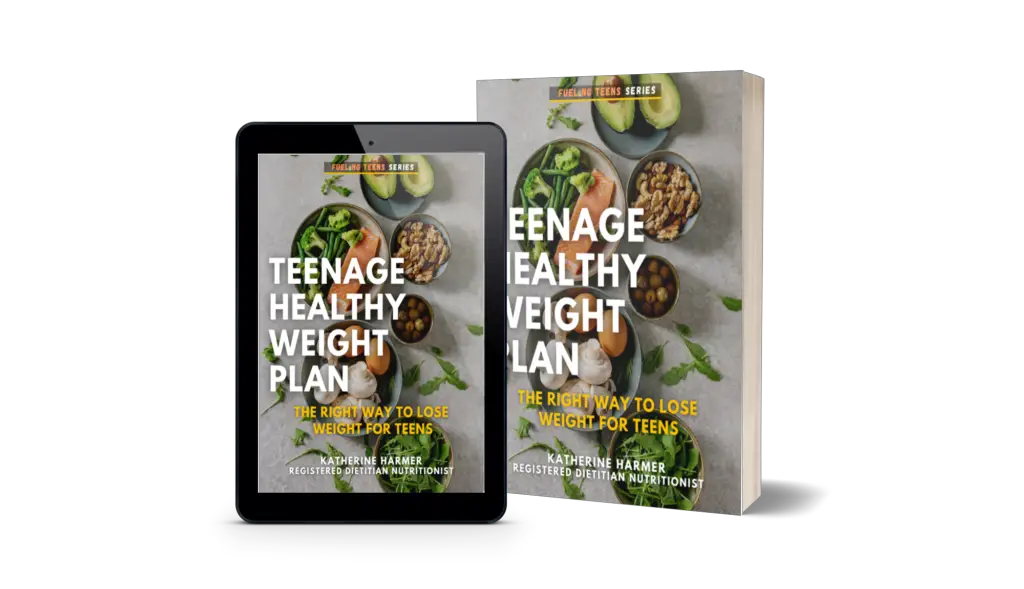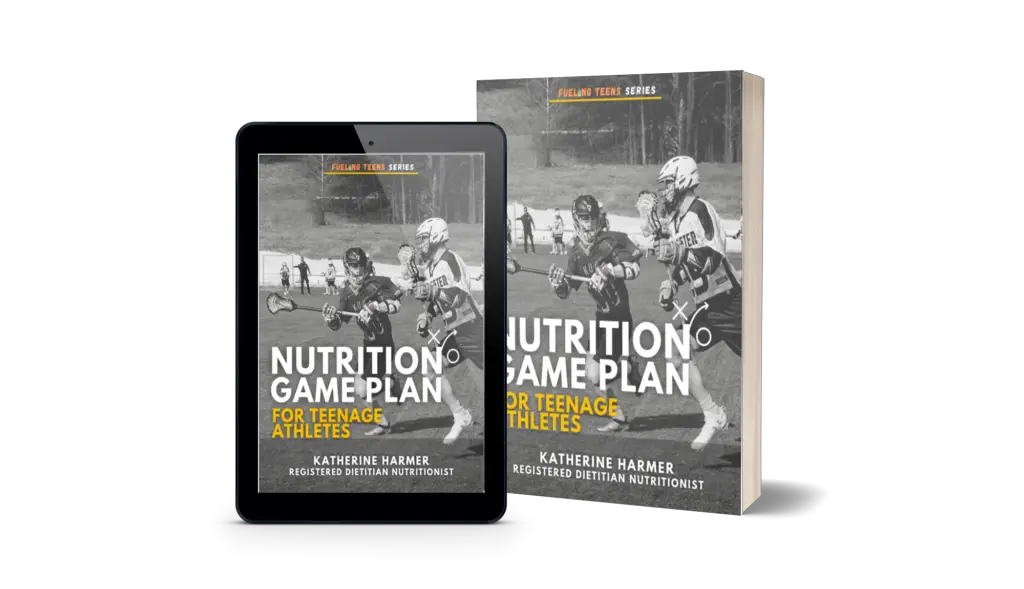Many teens eat a diet that is too high in fat, sugar, and sodium. However, the right kind of fat is good for a growing teenager and needed in their diet. The right types of fats can fuel a teen’s developing brain and give their body the fuel it needs.
Teenagers need 25-35% of their total calories from unsaturated fats. For teens that need 2,000 calories per day, that’s about 56-78 grams of fat in a day. Saturated fat should be less than 10% of daily calories. Low fat diets are not healthy for teens; the key to fat intake is moderation and choosing healthy fats.
Keep reading for all your fatty questions answered from a registered dietitian nutritionist. Why do teens need fat, what are the best fat sources for teenagers, what happens if you eat too much or too little fat, how to calculate your fat intake, what fatty foods to avoid, and more!
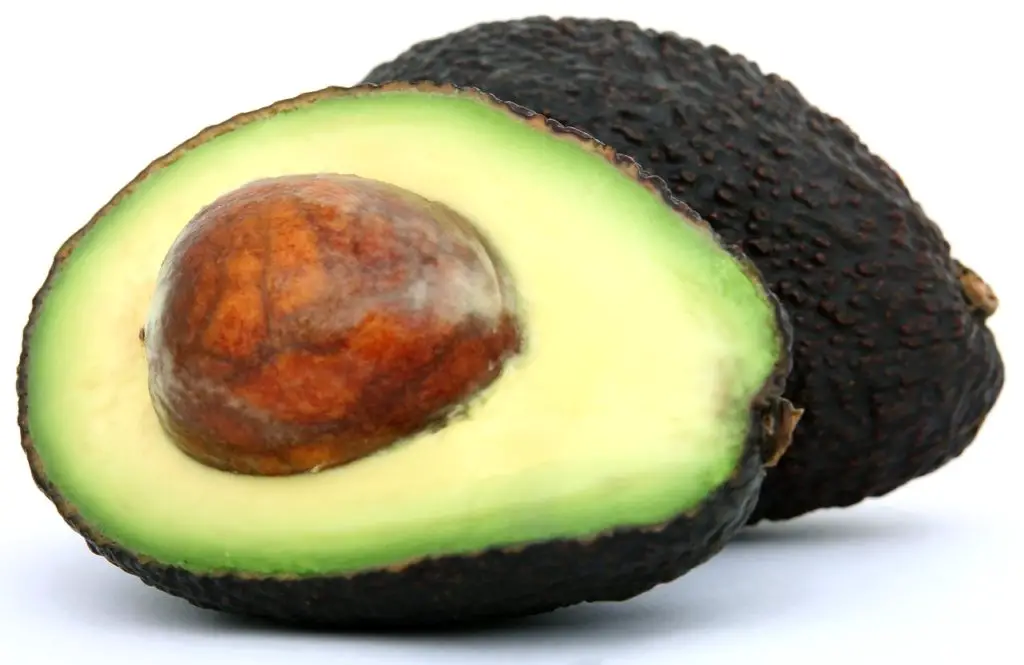
Dietary Fat Needs for Teenagers
Nutrition recommendations for teenagers are 25-35% of total calories should come from fat (for teens age 19, recommendations are 20-35%). That might not mean much beause it can be difficult to track fat intake.
Teenagers typically need around 2,000-3,000 calories per day based on gender, age, size, physical activity levels, etc. (Check calorie needs here!) Fat provides 9 calories per gram. With 25-35% of calories coming from fat, a teen at 2,000 calories per day would need 56-78 grams of fat per day.
A teenager who needs 3,000 calories per day would need 83-117 grams of fat per day. Check out your teen’s estimated fat needs based on this chart:
Recommended Fat Intake for Teenagers:
| Age/Gender** | Calorie Level | Fat Recommendations |
|---|---|---|
| 13 year-old female | 2,000 | 56-78 grams per day |
| 13 year-old male | 2,200 | 61-86 grams |
| 14 year-old female | 2,000 | 56-78 grams |
| 14 year-old male | 2,400-2,600 | 67-101 grams |
| 15 year-old female | 2,000 | 56-78 grams |
| 15 year-old male | 2,400-2,600 | 67-101 grams |
| 16 year-old female | 2,000 | 56-78 grams |
| 16 year-old male | 2,800 | 78-109 grams |
| 17 year-old female | 2,000 | 56-78 grams |
| 17 year-old male | 2,800 | 78-109 grams |
| 18 year-old female | 2,000 | 56-78 grams |
| 18 year-old male | 2,800 | 78-109 grams |
| 19 year-old female* | 2,200 | 49-86 grams |
| 19 year-old male* | 2,800 | 62-109 grams |
**Calorie recommendations are based on levels for moderately active teens. “Not active”, and “active” teens may need more or less calories and grams of fat. Check out the calorie recommendations based on gender, age, and activity level here.
Dietitian nutrition professionals do not recommend that most teenagers count calories or macros, the important focus during the teen years is to develop a healthy relationship with food and to eat a balance of foods.
It can be helpful to know fat intake recommendations, but more importantly it’s the time to learn nutrition knowledge, to be aware of foods that contain healthy levels of fat and which foods should be eaten in moderation. Examples of healthy and less healthy fats are listed below.
Why Do Teenagers Need to Eat Fat?
Everyone needs fat, but it’s especially important for teenagers as their bodies are growing and changing so much. Fat is so important in the body in many ways. Here are some examples.
Functions of Fat in the Body:
- Provides energy for thinking, focusing, breathing, moving, daily activities, etc.
- Promotes healthy brain and nerve development (very important during the adolescent years!)
- Helps absorb the fat-soluble vitamins- vitamin A, vitamin D, vitamin E, vitamin K
- Hormone creation
- Stored for later use in fat cells
- Insulates our tissues and nervous ysystem
- Helps us to feel full
Benefits of Eating Healthy Fats:
- Lowers risk of disease such as heart disease, stroke, and cancer
- Lowers bad cholesterol levels and increases good cholesterol levels
- Fights inflammation
- Lowers triglycerides (unhealthy levels in your body may lead to health problems)
- Lowers blood presure
- Prevents atherosclerosis when blood arteries narrow and become hard for blood to travel through
- Prevents and reduces symptoms of depression, anxiety, and other mental health symptoms
- Boosts memory and improves focus
- Helps with feelings of fatigue
- Improves your mood
Fat also makes foods taste good, but it’s higher in calories than protein and carbohydrates. Choose a balance of fats and other types of food for a healthy diet.
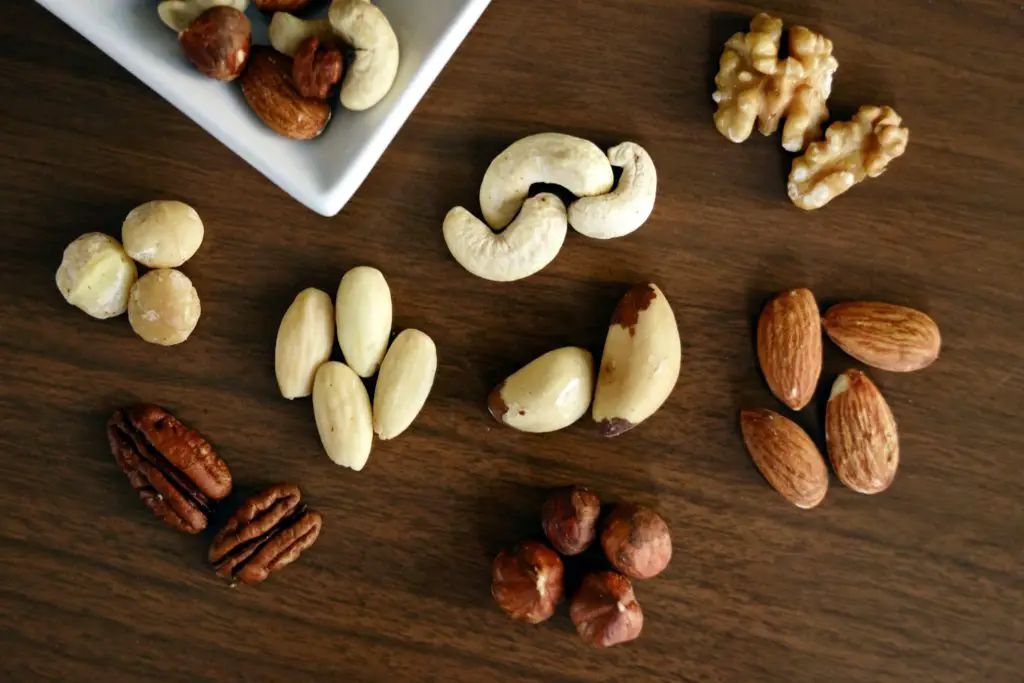
See also: How Many Grams of Fat Does a 15-Year Old Need Per Day? and Meal Plan for Teen Athletes
What Are Good Fats for Teens?
Not all fats are created equal. The right fats in the right amounts make a healthy diet for teenagers. But what are the good fats? Most teens and young millennials have heard that avocados are healthy fats, but what else is a good fat? What are the fats to avoid or limit?
Different Types of Fat:
Unsaturated Fats– Found in plants and fish, these are the healthy, beneficial fats for our bodies. There are 2 types-
- Monounsaturated– in olive oil, canola oil, nuts and nut oils, and avocados.
- Polyunsaturated Fats– found in seed oils like sesame or sunflower, soybeans, nuts, and also in fish and fish oil. Omega 3 fatty acids are polyunsaturated. They are known as healthy fats and help with improved focus and memory, mental health, and more. You can get Omega 3s from fatty fish (mackerel, salmon, herring), cod liver oil supplements, some eggs, chia seeds, flax seeds, etc.
Saturated Fats– These are solid fats found in meat, butter, lard, cheese, whole fat dairy products, other animal products, plus some tropical oils palm oil and coconut oil. Cakes, cookies, and snack foods have higher amounts of saturated fats as well. The goal is to limit saturated fats in your diet.
Trans Fat– Trans fats in small amounts can be naturally found in meat and dairy products, but the artificial kind are more worrisome. Artifically made trans fats are found in many fried foods, processed foods, packaged baked goods, snack foods, etc.
Manufacturers start with vegetable oils and add hydrogen to change the structure into a spreadable, solid fat such as some stick mararines, vegetable oil spreads, or anything containing partially hydrogenated vegetable oil, or hydrogenated vegetable oil etc. Trans fats are the worst for your health and should be limited as much as possible.
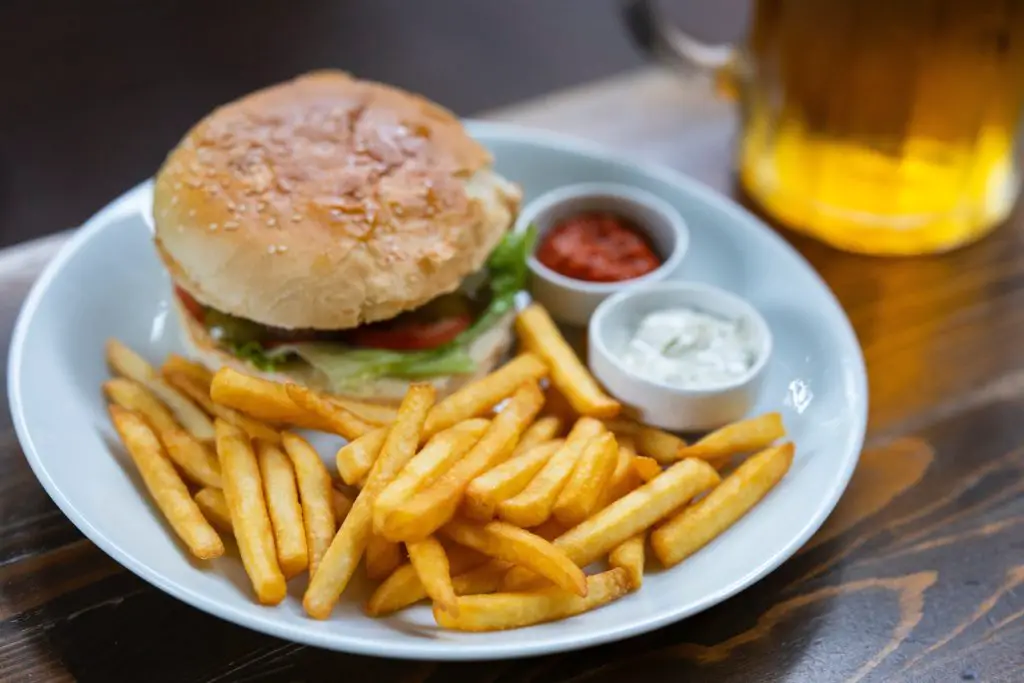
Unsaturated fats are the best kind to consume. They are known as the good fats and they come from many whole, natural foods and are beneficial and needed in our bodies. They help with body cell formation, brain development, energy, and overall health. Make healthy swaps so that most of your fats are coming from unsaturated fat sources.
Healthy Swaps to Limit Saturated and Trans Fat:
- Use olive oil instead of butter or coconut oil when possible in baking, pan frying, etc.
- Limit cream cheese and choose natural peanut butter from peanuts instead
- Choose lean meats instead of fatty steaks
- Try hummus instead of ranch
- Use mustard instead of mayo on sandwiches
- Try adding less cheese to your meals
- Switch from whole-fat dairy to lowfat dairy
- Choose grilled meats instead of fried
- Replace some meat with beans, nuts, poultry, or fish
- Limit desserts to special occasions and practice moderation and portion control
- Add nuts and seeds to foods
- Make your own salad dressings
- Eat more olives and avocados
Don’t stress about counting fat grams in your diet, instead focus on a diet rich in a variety of healthy fats and foods such as vegetables, fruit, nuts, and beans, fatty fish, some dairy, small amounts of red meat, and only the occasional fried or processed meal.
What Are The Unhealthy/Bad Fats for Teens?
Too much fat can cause health problems, especially too much of the unhealthy fats- saturated and trans fat.
Saturated fat intake has been controversial in recent years as studies have suggested types of saturated fat do not increase health risks. More research is needed overall. The 2015-2020 Dietary Guidelines suggests to limit saturated fat to less than 10% of daily calories.
Saturated fat is found in many types of snack foods and desserts, which is beneficial to limit in your diet. Also, use moderate amounts of butter, eat red meat sparingly, and choose moderate amounts of lowfat dairy products for a balanced, healthy diet.
Trans fats– Limit trans fats in your diet. There is no set recommendation for trans fats besides “consume as little as possible”. Check food labels to limit these in your diet. Trans fats cause health risks by raising bad blood cholesterol levels and increasing risk of heart disease.
Many manufacturers are decreasing trans fat ingredients in foods, but you also need to watch out for “hydrogenated vegetable oil” as an ingredient in packaged foods (such as in peanut butter).
If you are interested in weight loss as a teenager, it’s important to learn what advice is real and legitimate, and what just comes from fad diets and harmful sources. I’ve written an e-Book guide and month-long meal plan to help teens establish habits that will help them get to a healthy weight and maintain it. It will help teens develop attitudes and behaviors that will lead to a positive relationship with food and nutrition throughout their lives.
The book is available in the Downloads section of my website here – Downloadable Content.
Best Sources of Fat for Teenage Girls and Teenage Boys
This list contain healthy fats, as well as healthy foods that contain some fat:
- Avocados
- Olives
- Nuts- walnuts
- Seeds- chia seeds, flax seeds, hemp seeds, macadamia nuts, almonds, pecans, pumpkin seeds, etc.
- Seafood– salmon, mackerel, tuna, trout, herring, sardines, and whitefish. If your teen doesn’t like fish, you might consider talking to their doctor about a cod liver oil supplement for omega 3s in their diet.
- Oils- olive oil, sunflower oil, safflower oil, soybean oil
- Eggs– egg yolks and egg whites
- Dairy products- choose lowfat dairy products which are healthy and don’t have as much fat
- Peanut butter– made from whole peanuts without added sugars and hydrogenated vegetable oils
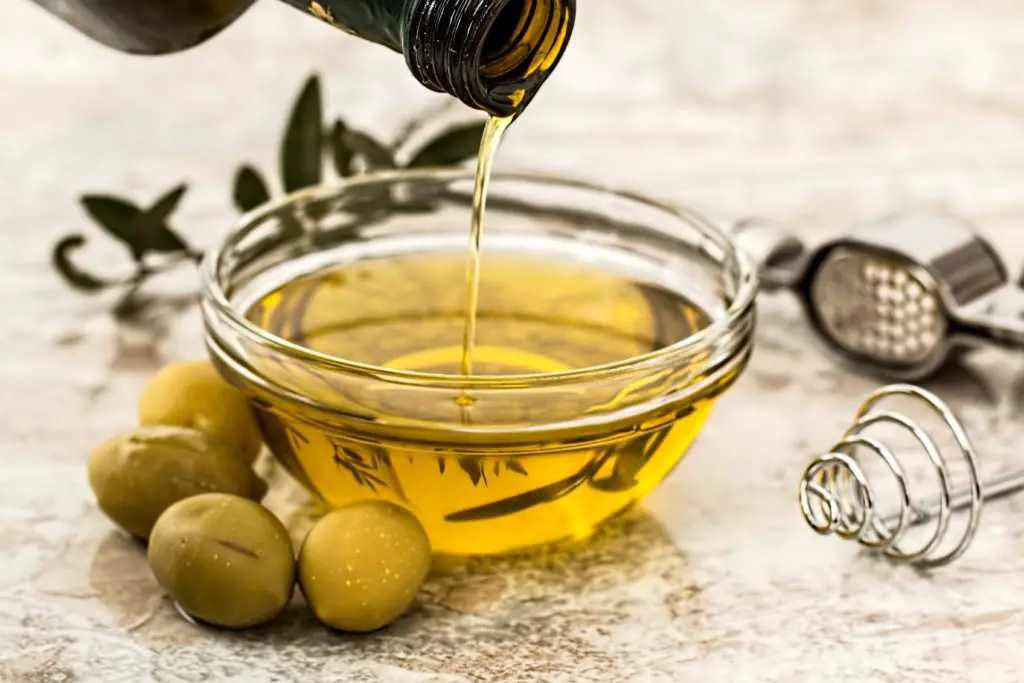
How Much Saturated Fat Should a Teenager Have A Day?
Saturated fats might not be as concerning as believed in the past, but they still aren’t the healthiest choices for fats. Many unhealthy foods contain saturated fats, those should be avoided such as packaged snack foods and desserts, processed fatty meats, ice cream, etc. Foods that naturally contain saturated fats such as dairy products, other animal products, and tropical oils can still be eaten in moderation.
The 2015-2020 Dietary Guidelines for Americans (see page 97) recommends no more than 10% of daily calories coming from saturated fats for children, teenagers, and adults. For a teenager at 2,000 calories per day, that’s no more than 200 calories per day or 22 grams coming from saturated fat.
For a teenager who needs 3,000 calories per day, that’s no more than 300 calories per day or 33 grams of saturated fat. If your teenager regularly eats snack foods, that amount of fat can add up quickly.
Here’s an example of what a full day’s worth of saturated fat might look like for a teenager, and some ideas for healthy swaps:
| Foods Higher in Saturated Fat | Saturated Fat Amount | Healthier Swaps | Saturated Fat Amount |
|---|---|---|---|
| Little Debbie Snack Cake | 9 grams | 1/4 cup trail mix | 2 grams |
| 1 ounce potato chips | 3 grams | 1 string cheese | 1.5 grams |
| 1 cup whole milk | 5 grams | 1 cup lowfat milk | 1.5 grams |
| 1 tablespoon butter | 7 grams | 1 tablespoon olive oil | 2 grams |
| 3 oz steak | 15 grams | 3 oz chicken breast | 1 gram |
| Total: | 39 grams | 8 grams |
With some healthy swaps you can still enjoy some similar foods for a lot less fat and saturated fat.
How Much Unsaturated Fat Should a Teenager Have A Day?
Total fat intake should equal 25-35% of calories for teens. If the majority of those calories are coming from healthy fat choices (i.e. unsaturated fats) then about 50-100 grams per day of unsaturated fat would be a good recommendation for most teenagers, depending on individual total calorie levels. Some fat from saturated fat is okay as well, (less than 10% of total calories), but the majority should be from unsaturated fats in your diet.
How Much Fat is Too Much?
Lately, high fat diets have been promoted for weight loss, healthy skin, better energy, overall health, etc. However, too much of a good thing can be a bad thing. Like most things in nutrition, moderation is best.
Your body needs fat just like it needs protein and carbohydrates. A good habit of following the 25-35% recommendation of calories from fat for teens will benefit your body the most.
If you eat too much fat you are also consuming a lot of calories since fat has more calories per gram than carbohydrates or protein. Your body can’t use all of the extra fat and it will store it in your fat cells, which may cause unwanted weight gain.
By eating too much fat you will likely also experience gastroitestinal issues, high blood cholesterol and triglyceride levels in your body, and increased risks of heart problems, type 2 diabetes and insulin resistance, liver disease, stroke, cancer, etc.
By following a low-carb diet, ketogenic diet, atkins, etc. diet then you are replacing many carbohydrates with fats. Some higher fat diets can be healthy as long as unhealthy fats are avoided and care is taken to plan a balance of healthy nutrients into the diet. These restrictive diets are not recommended for teenagers.
Overall, eating too much fat is unhealthy especially if most of your fat is coming from saturated or trans fats. Too much saturated and trans fats can cause too much unhealthy cholesterol build up in your body, which increases risks for heart disease, stroke, etc.
What Happens if You Eat Too Little Fat?
If you are trying to lose weight, you shouldn’t limit fat too much in your diet. Fat is important, if you aren’t getting enough fat you’ll probably experience some unwanted side effects, and there will be some consequences in your body.
Fat helps you absorb the fat-soluble vitamins A, D, E, and K, so without enough fat in your diet you may develop vitamin deficiencies. A deficiency of these vitamins may cause bone weakness, night blindness, a weakened immune system, and lack of blood clottting properly. You will also notice a difference in the quality of hair, skin, and nails.
Also eating too little fat causes people to eat more carbohydrates, which can create unstable blood sugar levels, more cravings, and more hunger and fatigue, and even mood problems. You also may experience feeling constantly cold as your body will have a hard time keeping you warm and regulating temperature.
Fat provides energy and helps with hormone production. Without enough fat, teenage girls may experience loss of menstrual cycles and hormone problems. This can be harmful in growing and developing teenage girls.
Healthy fats also protect against heart problems, so you won’t get those benefits by limiting your fat intake.
How Do You Calculate Your Fat Intake? For Teens
Use the chart above to find your recommended intake of fat grams per day. Then keep track of the food you eat in a day. There are a few different ways to track your fat intake:
- Use an online food calculator to calculate total fat intake for you as you input your food choices and serving sizes
- Use food lists and other ways to learn how many fat grams are in food and add it up yourself throughout the day
- Read Nutrition Facts food labels. Pay attention to serving size and total fat, as well as saturated fat and trans fat amounts
You can use a combination of the 3 to get an idea of total fat intake over a day of food. It isn’t recommmended for most individuals to count up all the calories and fat grams they eat in a day, that becomes too obsessive and time-consuming.
The best thing to do is to learn about healthy fat choices and swap some unhealthy fats with the better choices. Just find ways to be mindful and your diet can be more balanced and healthy.
When looking at food products and labels, it can get confusing with all the “healthy” options and fat claims out there. Here’s a summary of some of the descriptions that can be used on food labels:
- “Fat-free” products contain less than 0.5 grams of fat per serving
- “low-fat” means the product contains 3 grams of fat per serving or less
- “lite” or “light” products contain 50% less than the regular version of the food
- “reduced fat” means a product contains 25% less fat than the regular version of the food
Just because a food has one of these labels, doesn’t necessarily mean it’s healthy for you. A product might have extra sugar or other calories to make up for the lack of fat.
How Many Grams of Fat Does a 13 Year-Old Need Per Day?
A 13 year-old female needs about 2,000 calories per day, total fat needs would be 56-78 grams per day. Less than 23 of those grams should come from saturated fat sources, the majority should be from unsaturated fats. A 13 year-old male needs about 2,200 calories per day with 61-86 grams coming from fat and less than 25 grams of saturated fat.
Choose some fat sources at each meal such as avocados and eggs for breakfast, milk or peanut butter at lunch, almonds or cheese or olives at snacks, and seafood for dinner.
See also: What is a Normal Weight for a 13-Year Old?
How Much Fat Should a 14 Year-Old Have a Day?
A 14 year-old female needs about 2,000 calories per day, with 56-78 grams of total fat per day, and less than 23 grams from saturated fat. A 14 year-old male needs about 2,400-2600 calories per day with around 67-101 grams of fat each day (depending on the calorie level) and approximately less than 27-29 grams from saturated fat.
Fat spaced evenly throughout the day at meals and snacks is a good idea, focusing on healthy fats such as seafood, nuts, seeds, oils, olives, avocados, etc.
See also: How Much Fat Does a 14-Year Old Need Per Day? and How Much Sugar Should a 14 Year-Old Have Per Day? Ask a Dietitian
What Snacks Are High In Fat?
Most of the popular snack foods among teenagers and adolescents contain a lot of fat. Including:
- Potato chips
- French fries
- Chocolate and candy bars
- Desserts like cakes, donuts, pastries, muffins, cookies, ice cream
- Packaged snacks like Doritos, Hostess cakes, Little Debbie snacks, Ritz Bitz cheese cracker sandwiches, etc.
- Whole fat chocolate milk
- Whole fat cheese
- Fast food and pizza
- Burgers and fried chicken
- High-fat meats- bacon, hot dogs, sausage, some red meat cuts
What is The Recommended Amount of Body Fat for Teenagers?
Too much dietary fat intake can contribute to weight gain and increased body fat. Teenagers shouldn’t stress too much about body fat levels. Body fat changes throughout life, and especially with puberty as a teenager’s body goes through growth and developmental changes.
It’s normal and expected to gain or lose some fat during the teenage years. If you continue healthy eating habits, you’ll likely be at a healthy rate of body fat even if you look different than when you were 12.
A healthy body fat percentage for a teenage girl is typically between 21-23 percent. A healthy body fat percentage for a teenage boy is typically between 10-12 percent.
Don’t stress if your number is a little higher or lower, boys typically lose fat during the teenage years and girls typically gain some fat. Your body will change a lot and so will your body fat amount, especially before and after going through changes with puberty and any growth spurts.
Don’t stress about your child’s body fat amount, talk with a doctor and a dietitian nutritionist if you have concerns about your child’s weight. They will help you make an appropriate healthy plan for your growing child. A teenager’s body needs fat in different areas.
Teens put their bones and muscles at risk if they don’t have enough fat, but having too much extra fat could increase risks of health problems and pain. Each person has different genetics which affects metabolisms. Everyone stores extra energy as body fat differently, there is no perfect body fat percentage.
It can be tricky to measure body fat percentage because a lot of the gym scales aren’t very accurate. Your child’s doctor probably doesn’t normally measure body fat, but tracks your teen’s growth through BMI, height and weight. This is usually sufficient.
Underwater weighing, Bod Pod (air displacement plethysmograph), and skinfold measurements are techniques used to measure body fat percentage, but are not always very common or accessible. BIA (Bioelectrical Impedance Analysis) scales or handheld devices can be fairly accurate (but also skewed based on quality and other factors).
They are typically not recommended for individuals younger than 18. Because of these factors, it may be difficult to measure exact body fat percentages in teenagers.
See also: What is the Best Diet Plan for a 15 Year-Old? Tips from a Dietitian
How Can Teenagers Burn Fat?
Teenagers should only focus on losing body fat if health experts recommend doing so after tracking growth over time on a growth chart.
Teenagers who need to lose body fat should not try a restrictive weight loss diet. The best way for a teenager to lose body fat is to adopt healthy eating habits and to build more muscle through added exercise. Teenagers should strive to get 60 minutes of moderate to vigorous physical activity added up throughout each day.
Summary
Teens need a lot of nutrients during their adolescent years of growth and development. Restricting foods is not a good idea as it could lead to nutrient deficiencies and growth problems.
Fat is an important nutrient for teenagers to consume in order to promote good health for healthy bodies, but too much fat can lead to health problems and risks, as well as excess body fat. Teenagers should strive to eat healthy fats throughout the day and limit fat from saturated fats and trans fat.
Related Posts
- Best Meal Plan for Teenage Athletes- FREE
- How Many Carbs Does a 15 Year-Old Need Per Day?
- How Much Sugar Should a 14 Year-Old Have Per Day?
- What is the Best Diet Plan for a 15 Year-Old to Lose Weight?
- What are the Best and Worst Foods for Teenagers?
Related Questions
How Much Cholesterol Should a Teenager Have Per Day? Teenagers should eat about 300 mg or less of cholesterol per day. Dietary cholesterol doesn’t have as much of an effect on blood cholesterol as we used to think, some people are just more prone to have high cholesterol.
Previous research lead to recommendations of no more than 300 mg of cholesterol per day. Now guidelines are to consume as little dietary cholesterol as possible, especially because foods high in cholesterol are usually high in unhealthy saturated fats as well. Teenagers could have high blood cholesterol levels if they are overweight or obese, have a family history of high cholesterol, or eat an unhealthy diet high in fats.
How Many Avocados Can You Eat in One Day? Teenagers that need 2,000 calories per day have fat recommendations of 56-78 grams of fat per day. One medium avocado has about 24 grams of fat, so you could technically eat 3 avocados per day and still be within your fat recommendations. However, the best choice is to enjoy avocados in moderation- about 1/2 of a medium avocado or less per day to leave room for other healthy fats.
See Also:
- How Many Calories Should a 14 Year-Old Teen Eat?
- Nutrition Meal Plan for Teenage Basketball Players
- Should a Teenager Count Calories?
Need more help with your diet this season? Get help from a registered dietitian nutritionist, check out my newest eBook: Nutrition Game Plan for Teenage Athletes. Includes 28-day meal plan, snack list, meal schedule, supplement tips, and so much more for your best season yet!
Also Available From Fueling Teens:
- FREE Downloadable Meal Plan for Teen Soccer (Football) Players
- Nutrition Game Plan for Teenage Basketball Players
- Nutrition Game Plan for Teenage Football Players
References:
2015-2020 Dietary Guidelines for Americans
Written by Katherine Harmer, RDN
Fueling Teens is a participant in the Amazon Services LLC Associates Program, an affiliate advertising program designed to provide a means for sites to earn advertising fees by advertising and linking to Amazon.com. We also participate in other affiliate programs which compensate us for referring traffic.

